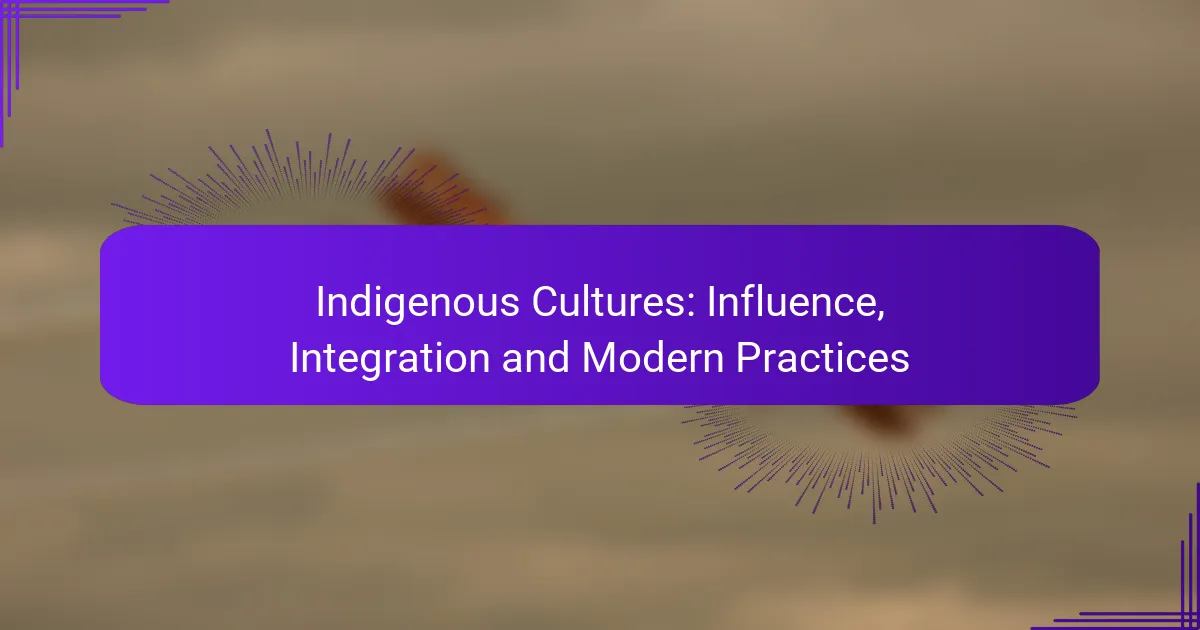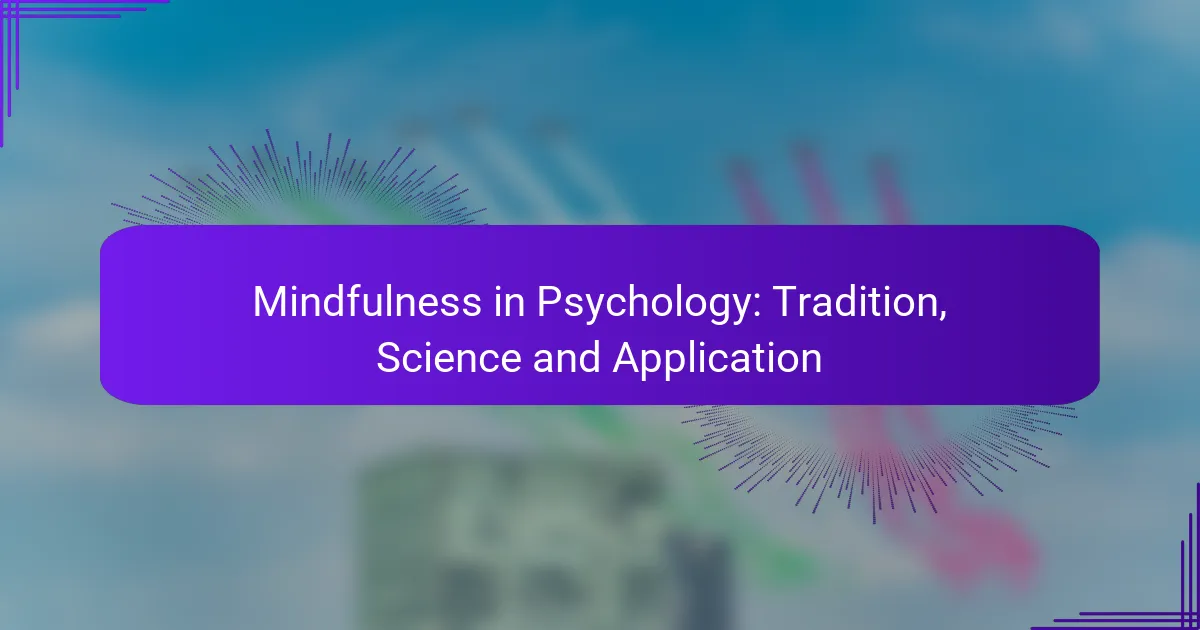Mindfulness, a practice rooted in awareness and presence, varies significantly across cultures, each adapting it to align with their unique spiritual and psychological frameworks. From the non-attachment emphasized in Buddhist traditions to the holistic well-being valued in Indigenous cultures, these diverse interpretations reflect a rich tapestry of beliefs. Historical, social, and spiritual contexts further shape how mindfulness is practiced and understood, influencing its integration into daily life worldwide.
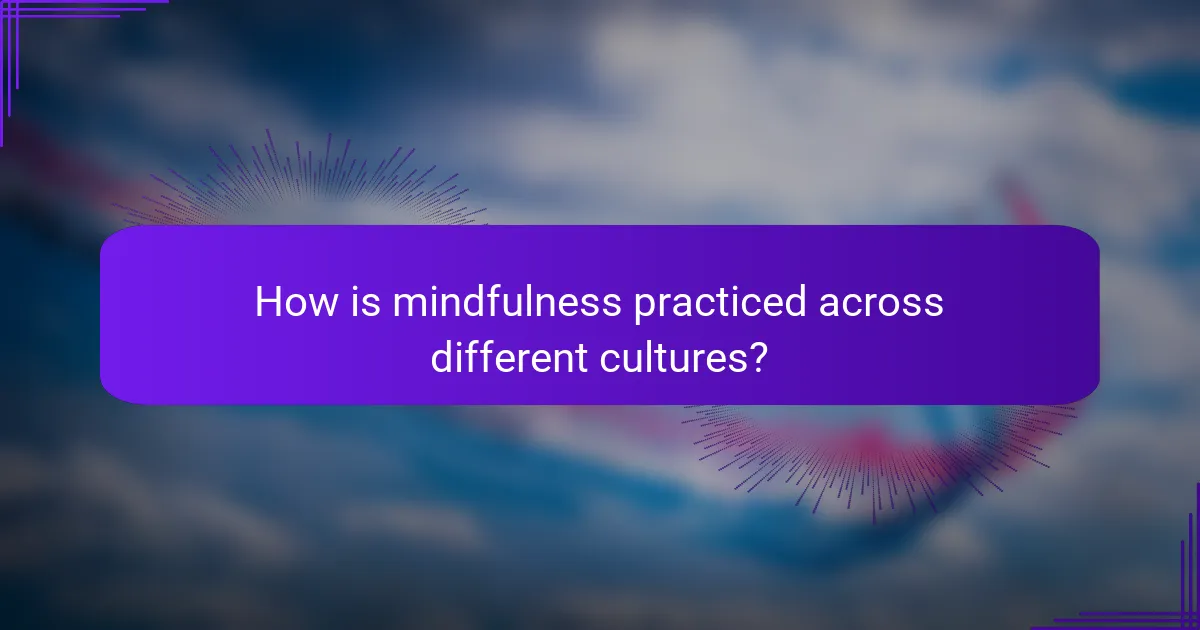
How is mindfulness practiced across different cultures?
Mindfulness is practiced in various ways across cultures, reflecting diverse beliefs and traditions. Each culture adapts mindfulness to fit its spiritual and psychological frameworks, resulting in unique practices and interpretations.
Zen Buddhism practices in Japan
In Japan, Zen Buddhism emphasizes zazen, or seated meditation, as a core mindfulness practice. Practitioners sit in silence, focusing on their breath and observing thoughts without attachment, which cultivates awareness and presence.
Zen gardens and tea ceremonies also serve as mindfulness practices, encouraging participants to engage fully with their surroundings and the present moment. These practices highlight simplicity and attention to detail, fostering a deep connection with nature and self.
Mindfulness in Tibetan Buddhism
Tibetan Buddhism incorporates mindfulness through various meditative techniques, including analytical meditation and visualization. Practitioners often reflect on the nature of reality and their own thoughts, aiming to develop compassion and insight.
Mindfulness in this context is not just about awareness but also about transforming the mind. Techniques such as Tonglen, where one breathes in the suffering of others and breathes out compassion, exemplify this transformative approach.
Mindfulness in Western psychology
In Western psychology, mindfulness is often integrated into therapeutic practices, such as Mindfulness-Based Stress Reduction (MBSR) and Mindfulness-Based Cognitive Therapy (MBCT). These approaches focus on reducing stress and improving mental health by encouraging individuals to observe their thoughts and feelings non-judgmentally.
Practitioners are taught to engage in mindfulness exercises, such as body scans and mindful breathing, which can be done in everyday settings. This practical application makes mindfulness accessible to a broader audience, often leading to significant improvements in well-being.
Indigenous mindfulness practices
Indigenous cultures worldwide have their own forms of mindfulness that are deeply rooted in their traditions and connection to the land. Practices often include rituals, storytelling, and communal gatherings that promote awareness of the environment and community.
For example, many Indigenous groups use nature walks or ceremonies to foster a sense of presence and connection to their heritage. These practices emphasize the importance of being mindful of one’s surroundings and the interconnectedness of all living things.
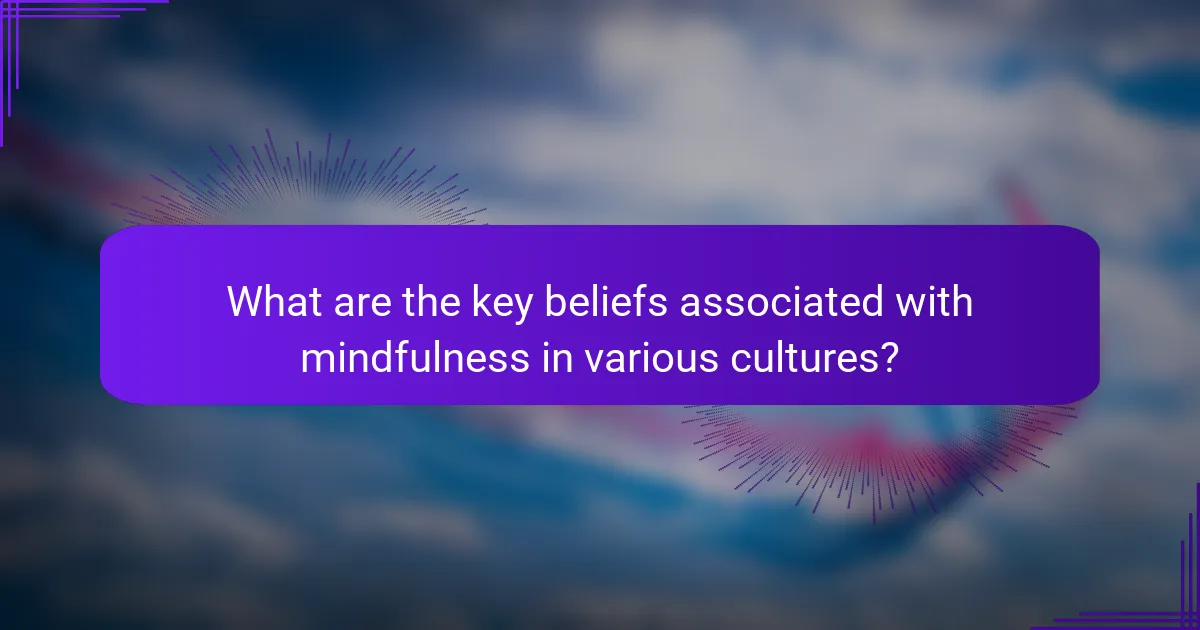
What are the key beliefs associated with mindfulness in various cultures?
Mindfulness encompasses a range of beliefs across different cultures, often emphasizing awareness, presence, and the interconnectedness of life. Key beliefs include non-attachment in Buddhist traditions, holistic well-being in Indigenous cultures, and scientific perspectives in Western contexts.
Non-attachment in Buddhist traditions
In Buddhist traditions, non-attachment is a central belief that encourages individuals to let go of desires and material possessions. This practice fosters a sense of inner peace and reduces suffering by promoting acceptance of the present moment.
Practitioners often engage in meditation and mindfulness exercises that focus on observing thoughts and feelings without judgment. This approach helps cultivate a deeper understanding of impermanence and the nature of existence.
Holistic well-being in Indigenous cultures
Indigenous cultures often view mindfulness as part of a broader understanding of holistic well-being, integrating mental, physical, emotional, and spiritual health. This perspective emphasizes the importance of community, nature, and ancestral wisdom in achieving balance.
Practices may include rituals, storytelling, and connection with the land, which foster a sense of belonging and purpose. Engaging in these activities helps individuals maintain harmony within themselves and with their environment.
Scientific perspectives in Western contexts
In Western contexts, mindfulness is often approached from a scientific perspective, focusing on its psychological benefits. Research indicates that mindfulness practices can reduce stress, enhance focus, and improve emotional regulation.
Mindfulness-based interventions, such as Mindfulness-Based Stress Reduction (MBSR), are commonly used in therapeutic settings. These programs typically involve structured practices that encourage participants to develop greater awareness and acceptance of their thoughts and feelings.
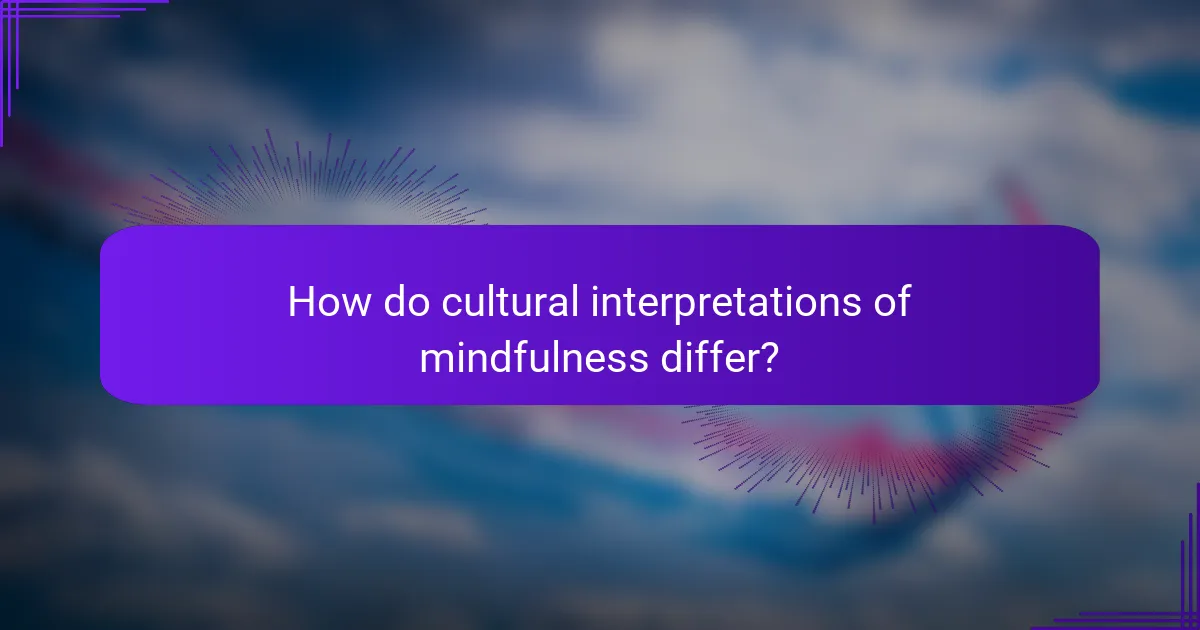
How do cultural interpretations of mindfulness differ?
Cultural interpretations of mindfulness vary significantly across different societies, shaped by historical, social, and spiritual contexts. These differences influence how mindfulness is practiced, understood, and integrated into daily life.
Individualism vs collectivism in mindfulness
In individualistic cultures, mindfulness often emphasizes personal growth, self-awareness, and individual well-being. Practices may focus on personal meditation techniques that foster self-reflection and emotional regulation.
Conversely, in collectivist cultures, mindfulness is frequently viewed through the lens of community and social harmony. Here, practices may involve group meditations or rituals that emphasize shared experiences and collective well-being, reinforcing social bonds.
Spiritual vs secular approaches
Spiritual approaches to mindfulness typically incorporate elements of religious or philosophical traditions, such as Buddhism or Hinduism. These practices often include meditation techniques aimed at transcending the self and connecting with a higher purpose.
Secular approaches, on the other hand, focus on mindfulness as a psychological tool for stress reduction and mental health improvement. These methods are often adapted for therapeutic settings, emphasizing practical applications like mindfulness-based stress reduction (MBSR) without spiritual connotations.
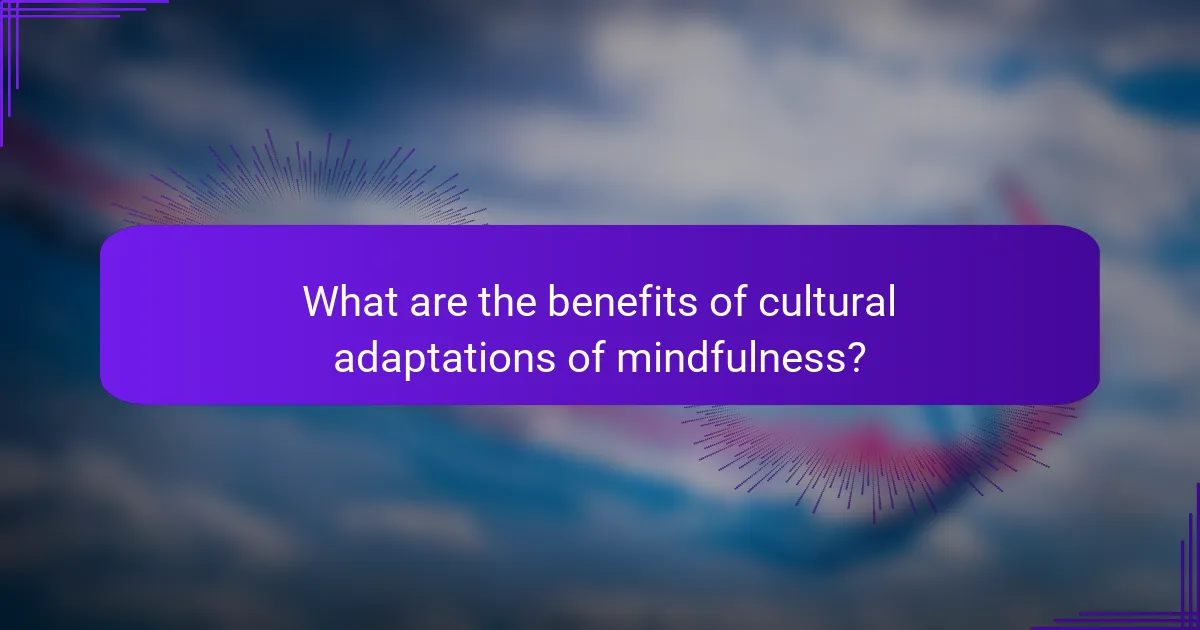
What are the benefits of cultural adaptations of mindfulness?
Cultural adaptations of mindfulness offer numerous benefits, including enhanced emotional resilience, improved mental health outcomes, and greater cultural relevance. These adaptations allow individuals to connect more deeply with practices that resonate with their unique cultural backgrounds and values.
Enhanced emotional resilience
Cultural adaptations of mindfulness can significantly bolster emotional resilience by integrating local beliefs and practices. For example, incorporating traditional storytelling or community rituals into mindfulness practices can help individuals process emotions in a culturally familiar context.
Practicing mindfulness through culturally relevant frameworks can also provide a sense of belonging and support, which is crucial for developing resilience. Engaging in group mindfulness sessions that reflect shared cultural experiences can foster stronger emotional bonds among participants.
Improved mental health outcomes
Adapting mindfulness to fit cultural contexts can lead to better mental health outcomes by making practices more accessible and relatable. For instance, using familiar language and concepts can enhance understanding and engagement, particularly in communities where mental health stigma exists.
Research indicates that culturally tailored mindfulness programs can reduce symptoms of anxiety and depression more effectively than generic approaches. These adaptations often include community support elements, which can further enhance their effectiveness.
Greater cultural relevance and acceptance
Cultural relevance in mindfulness practices increases acceptance and participation among diverse populations. When mindfulness techniques are aligned with cultural values and norms, individuals are more likely to embrace them as beneficial tools for personal growth.
For example, integrating local art forms, music, or spiritual practices into mindfulness can create a more inviting atmosphere. This approach not only respects cultural heritage but also encourages individuals to explore mindfulness as a valuable resource for well-being in their daily lives.

What frameworks exist for integrating mindfulness practices?
Several frameworks are designed to integrate mindfulness practices into various settings, focusing on mental health, stress reduction, and overall well-being. These frameworks offer structured approaches that can be adapted to individual needs and cultural contexts.
Mindfulness-Based Stress Reduction (MBSR)
Mindfulness-Based Stress Reduction (MBSR) is an evidence-based program developed to help individuals manage stress and improve mental health. It typically involves an 8-week course that combines mindfulness meditation and yoga, encouraging participants to cultivate awareness of the present moment.
Key components of MBSR include body scans, mindful breathing, and gentle yoga practices. Participants often report reduced anxiety and improved emotional regulation. A common pitfall is underestimating the commitment required; regular practice is essential for effectiveness.
Mindfulness-Based Cognitive Therapy (MBCT)
Mindfulness-Based Cognitive Therapy (MBCT) integrates mindfulness practices with cognitive behavioral techniques to prevent relapse in individuals with recurrent depression. The program usually spans 8 weeks and emphasizes recognizing negative thought patterns while fostering a non-judgmental awareness of thoughts and feelings.
MBCT helps participants develop skills to break the cycle of depressive relapse by promoting self-awareness and acceptance. It’s crucial for participants to engage fully with the exercises and discussions to gain the maximum benefit. A common mistake is to treat it as a quick fix rather than a long-term practice.
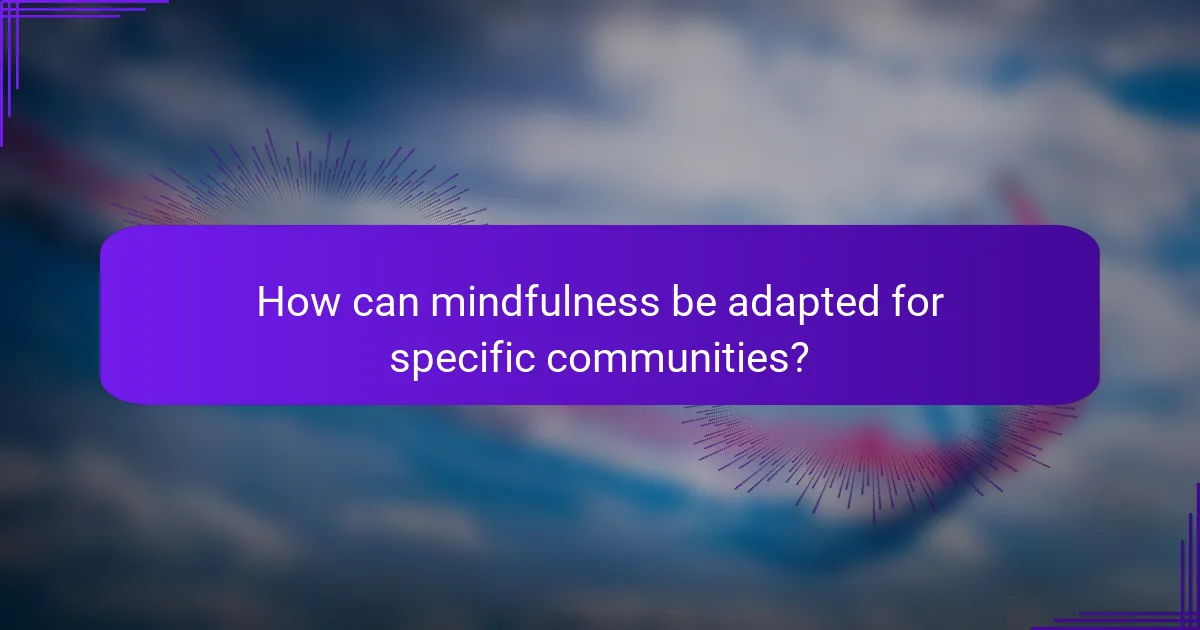
How can mindfulness be adapted for specific communities?
Mindfulness can be tailored to meet the unique needs and cultural contexts of different communities, enhancing its effectiveness and relevance. By considering the specific challenges, values, and environments of these groups, mindfulness practices can become more accessible and beneficial.
Mindfulness for urban populations
Urban populations often face high levels of stress due to fast-paced lifestyles and crowded environments. Mindfulness practices in these settings can focus on short, accessible techniques such as mindful walking or brief breathing exercises that can be integrated into daily routines.
Community-based programs can also foster group mindfulness sessions in parks or community centers, promoting social connection while practicing mindfulness. Techniques like guided imagery can help individuals visualize calm spaces, which is particularly useful in noisy urban settings.
Mindfulness in corporate settings
In corporate environments, mindfulness can enhance employee well-being and productivity. Programs often include structured workshops that teach employees how to incorporate mindfulness into their workday, such as taking short breaks for deep breathing or practicing gratitude journaling.
Companies may also implement mindfulness apps that offer guided meditations tailored to workplace challenges. It’s important to create a culture that supports mindfulness, encouraging employees to prioritize mental health without stigma, which can lead to improved morale and reduced burnout.
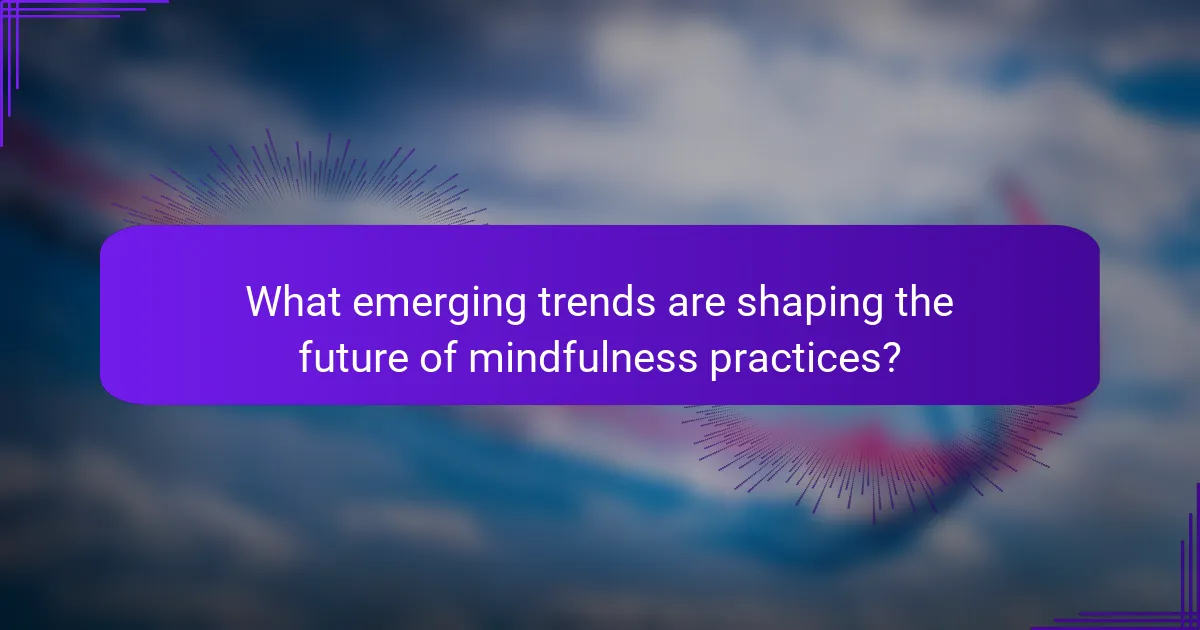
What emerging trends are shaping the future of mindfulness practices?
Emerging trends in mindfulness practices are increasingly influenced by technology, cultural adaptations, and a focus on mental health. These trends reflect a growing recognition of the importance of mindfulness in everyday life and its potential to enhance well-being.
Integration of technology in mindfulness
The integration of technology into mindfulness practices is transforming how individuals engage with these techniques. Mobile apps, virtual reality, and online platforms provide accessible resources for guided meditations, mindfulness exercises, and community support.
For example, popular apps like Headspace and Calm offer a range of features, including timed meditations, sleep aids, and progress tracking. These tools can help users incorporate mindfulness into their daily routines, making it easier to practice consistently.
While technology can enhance mindfulness, it is essential to maintain a balance. Users should be cautious of over-reliance on devices, ensuring that technology serves as a tool rather than a distraction. Setting specific times for tech-free mindfulness can help maintain focus and deepen the practice.

